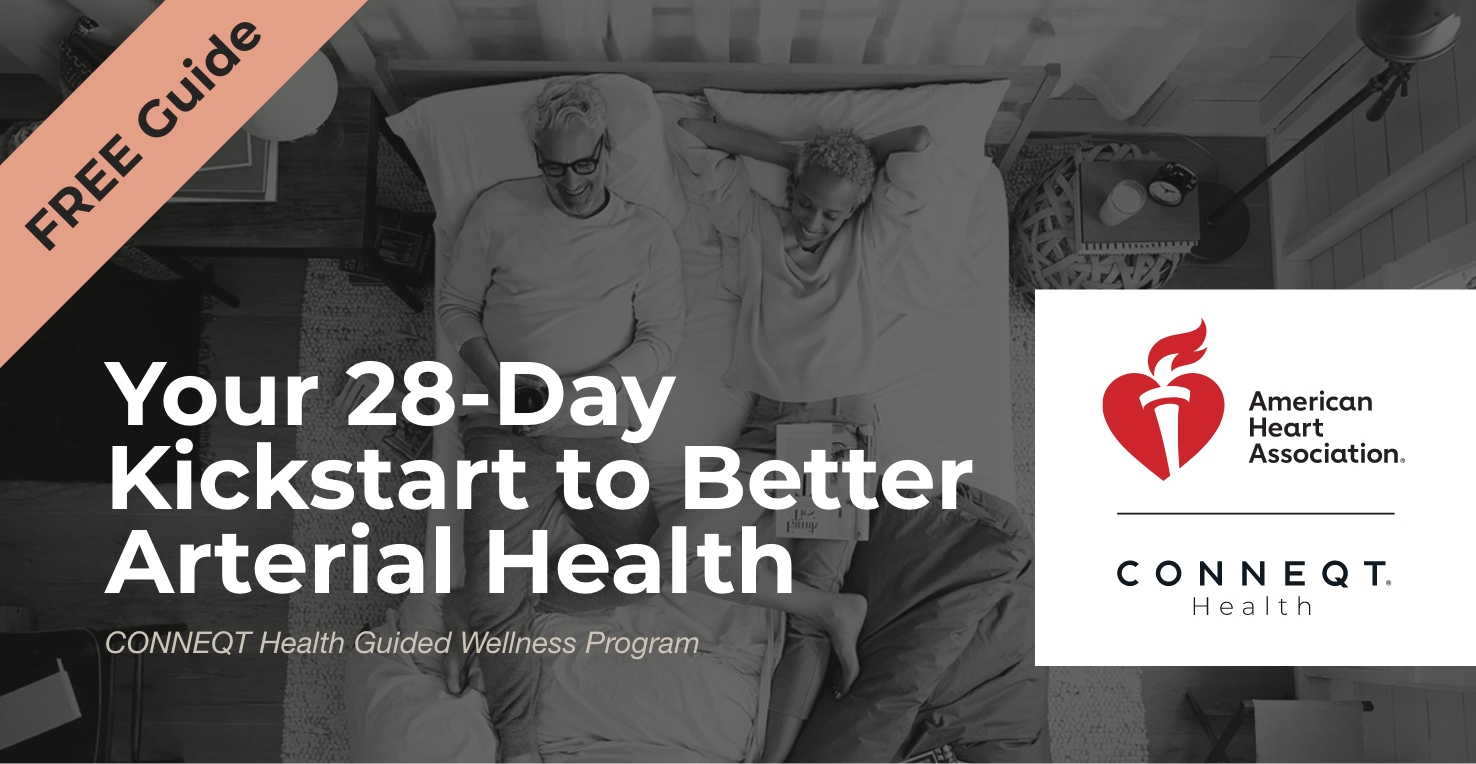Track your arterial biometrics today for a healthier tomorrow
Central blood pressure, central pulse pressure, and arterial stiffness are powerful independent predictors for cardiovascular events and all-cause mortality. CONNEQT Pulse is the only device that enables you to track these parameters at home and in real time.
Read more below to learn about some of CONNEQT Pulse’s unique vascular biometrics
Central Blood Pressure
What it is: Calculated using pulse wave analysis and a traditional brachial cuff, central blood pressure measure pressure at the root of the aorta.
Why it matters: Central blood pressure reflects key vascular issues such as arterial stiffness, which makes it a more accurate predictor of subclinical cardiovascular disease than traditional brachial blood pressure alone.
The research: In a person-level meta-analysis of 5576 patients, it was concluded that “irrespective of the brachial blood pressure status, central hypertension increased cardiovascular and cerebrovascular risk indicating the importance of controlling central hypertension.”
Central Pulse Pressure
What it is: The height of pressure at the heart, central pulse pressure shows the pressure to which key organs like the heart, brain, and kidneys are exposed.
Why it matters: Central pulse pressure helps identify the risk of end organ damage to key organs like the brain, kidney, and heart.
The research: In a study of 1109 patients, central pulse pressure was shown to be independently related to major cardiovascular events, while brachial blood pressure is not.
Augmentation Pressure
What it is: The increase in central aortic pressure caused by pressure wave reflection.
Why it matters: A marker of arterial stiffness, elevated augmentation pressure is associated with cardiovascular risk factors as well as increased cardiovascular morbidity and mortality.
The research: In a multi-year study of nearly 300 patients published in Hypertension, it was established that augmentation pressure predicts adverse cardiovascular events in patients with established coronary artery disease.
eAugmentation Index (AIx)
What it is: An indirect measure of arterial stiffness that increases with age, augmentation index reflects the burden stiff arteries place on the heart. Think of it as a complementary and far more accessible parameter to the calcium score.
Why it matters: Chronic stress on the heart and the cardiovascular system can lead to heart failure and hypertrophy (enlarged heart).
The research: The Framingham Heart Study showed patients with increased arterial stiffness (reflected in a high Augmentation Index) were 48% more likely to develop cardiovascular disease. Loss of elasticity in the arteries predicts future risk of Type 2 diabetes better than blood pressure alone, according to a 2022 study in Hypertension, a journal of the American Heart Association. Arterial stiffness has also been associated with the development of cerebral small vessel disease and amyloid plaques, two important biomarkers for Alzheimer’s.
Subendocardial Viability Ratio (SEVR)
What it is: SEVR measures the supply of blood that flows to your inner heart muscle in relation to demand. Think of it as a complement to VO2 max.
Why it matters: SEVR offers insight into how well a person's heart can handle the stress of exercise.
The research: According to the Journal of the American Heart Association in a 2024 publication, "the subendocardial viability ratio can effectively evaluate the function of the coronary microcirculation and is associated with arterial stiffness. This ratio also has potential value in predicting adverse cardiovascular events and mortality in various populations."
How do these parameters inform care?
Precise estimation of central blood pressure improves management decisions in hypertension
You can't change your chronological age, but you can influence your vascular age
Get to know your heart with personalized, precise, and clinically validated insights from CONNEQT Pulse.


